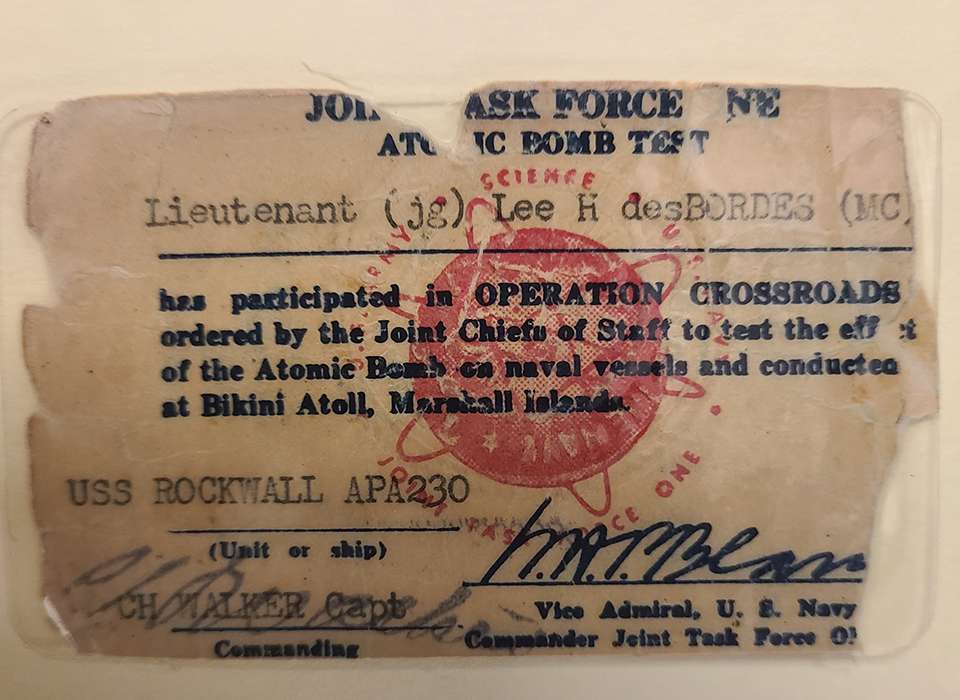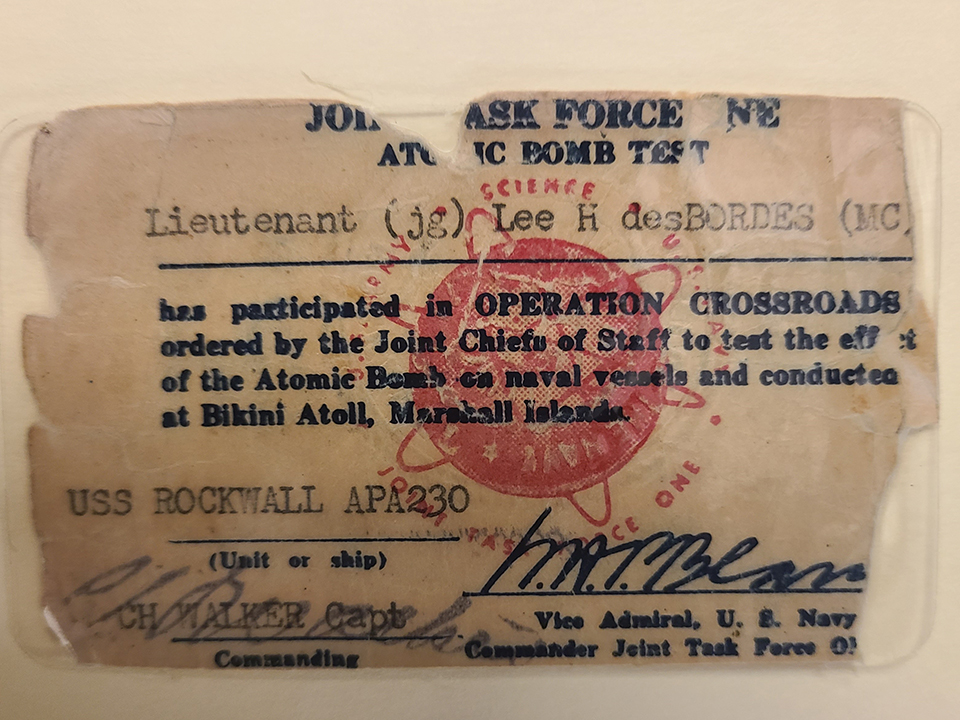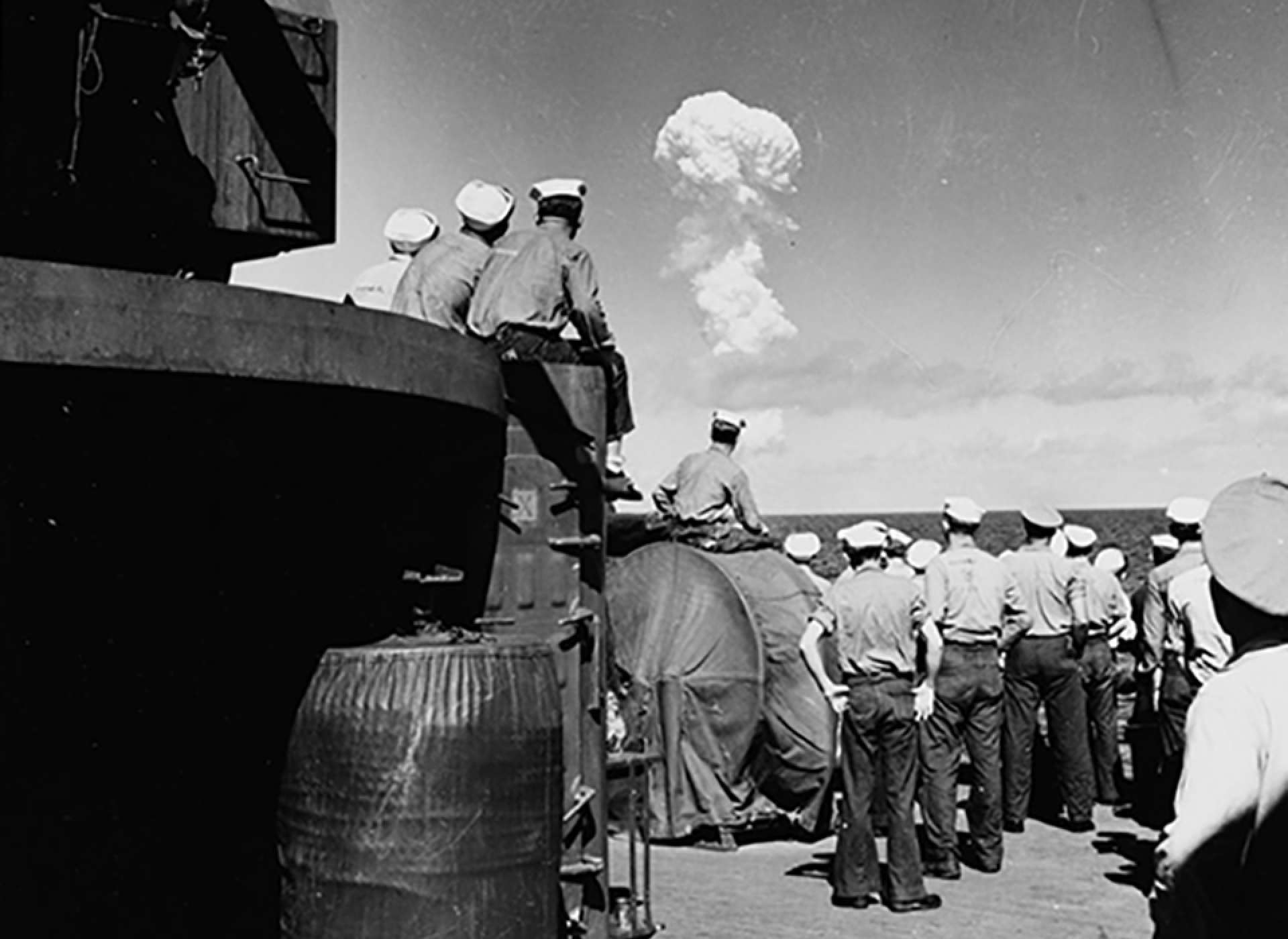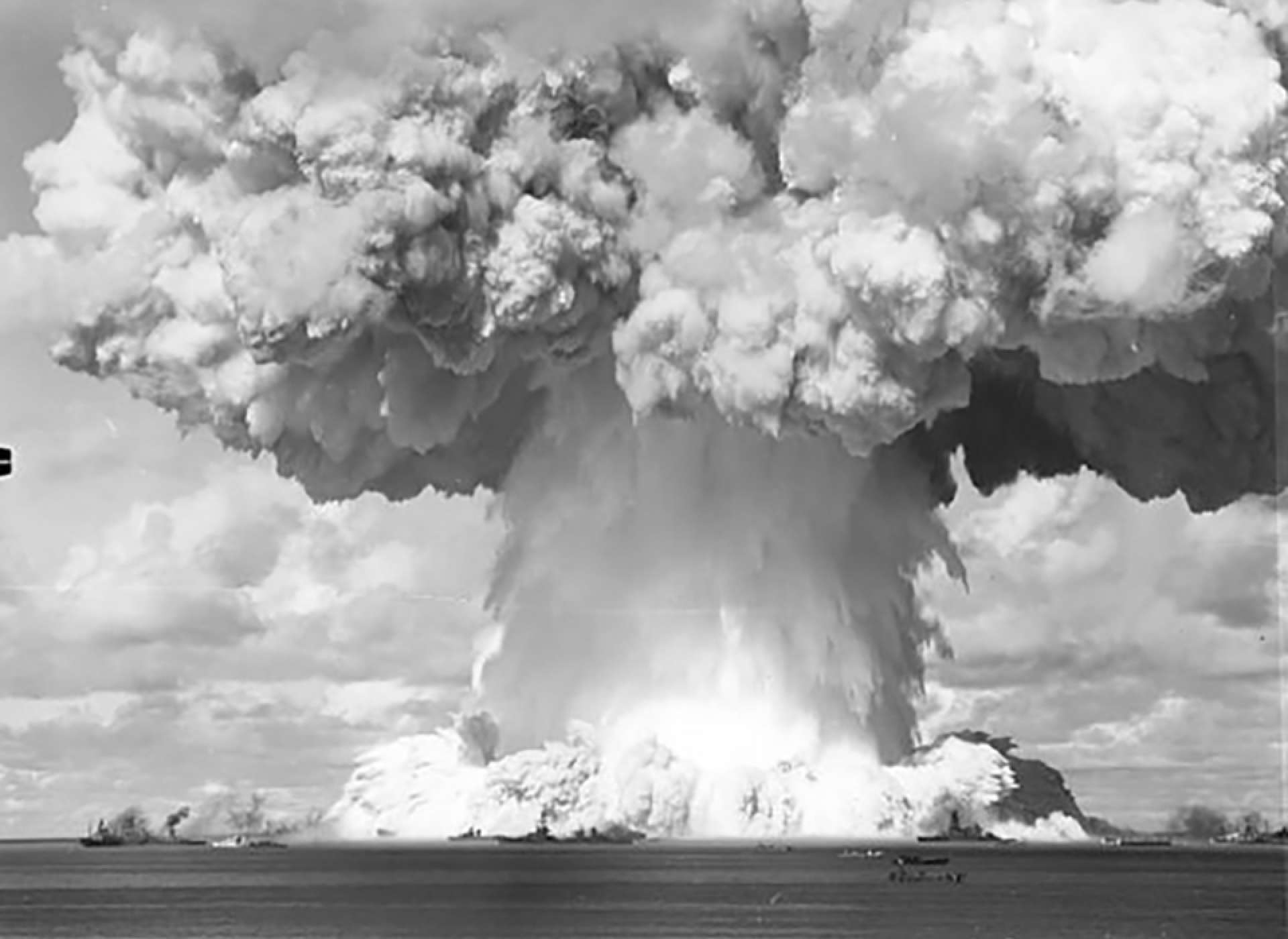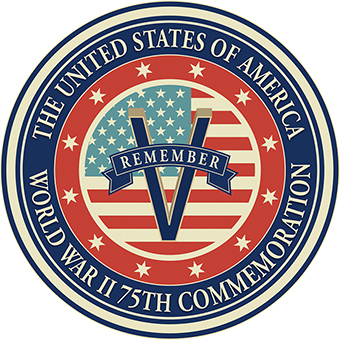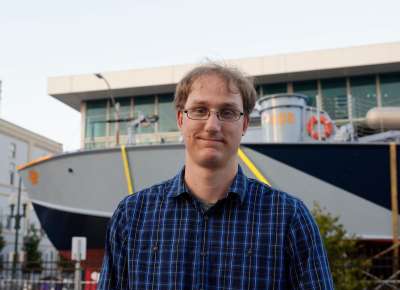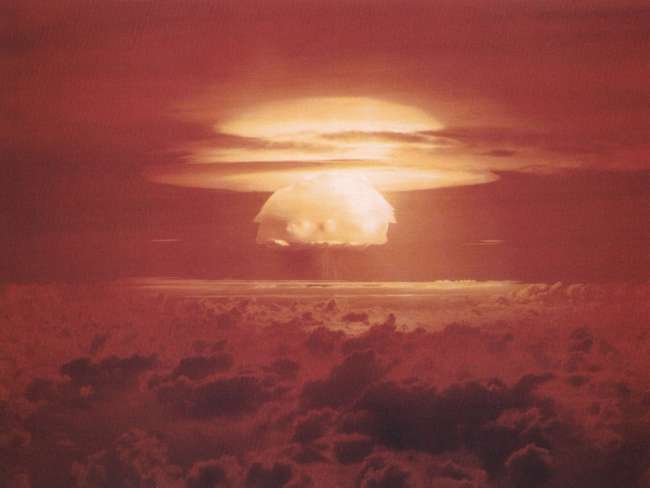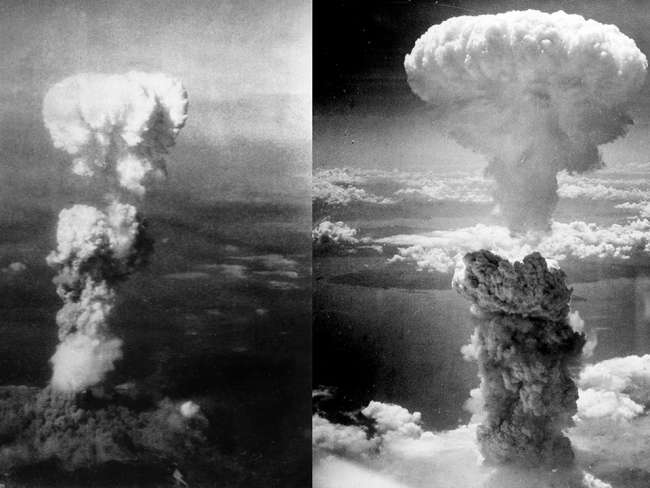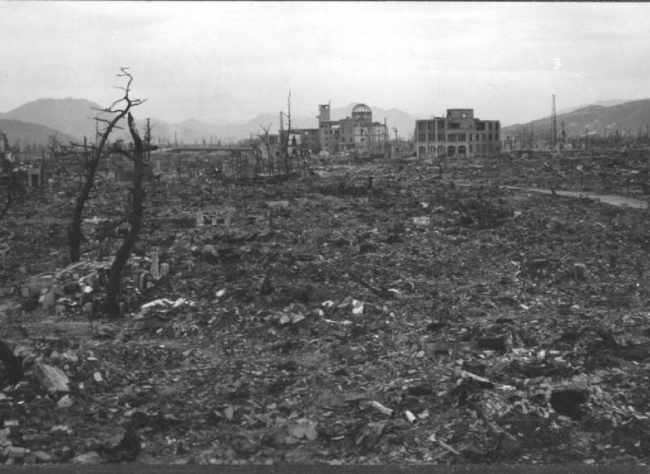On January 11, 1946, Joint Task Force One was established and began gathering ships and resources to complete an important mission. Although World War II had been over for five months, the formation of this task force was a continuation of the well-oiled machine that had organized dozens of major operations over the previous four years as American forces marched across the vast Pacific Ocean. By June 1946, over 100 ships, scores of aircraft, and more than 42,000 servicemen began to gather around a small atoll named Bikini in the Marshall Islands. Their mission, Operation Crossroads, was simple—weapons testing on target vessels. What made this group different was the scale of the project, requiring 84 target vessels and three atomic bombs.
Joint Task Force One ID card of Lieutenant jg. Lee H DesBordes. DesBordes served as a medical officer on USS Rockwall (APA-230) during operation Crossroads. Gift in Memory of Dr. Lee H desBordes, 2009.527.001.
The majority of artifacts in the collection at The National WWII Museum consist of material from the years that the United States was involved in the war. It may seem simple to only pull material from the war years, however, pre- and post-war objects often find their way into the collection. Millions were in service before, during, and after World War II, which always complicates the story that their individual artifacts can tell. Often, people carried material from their civilian life during the war. At the same time, men and women that remained in service of their country after the end of hostilities have material that can put their wartime contributions into context.
This is the case with the material from the service of Lieutenant Lee H DesBordes. His collection is very simple, just one beat up ID card from Joint Task Force One, which serves as a seemingly simple artifact marking his participation in Operation Crossroads, the atomic tests at Bikini in July 1946. The simple ID card is a good representation of the logic behind Operation Crossroads—testing what would happen to a fleet of ships if it was hit by an atomic bomb. I say it is a good representation because it embodies the basic idea behind the test by marking participation, but does not address the tremendous impact that these tests would have on servicemen, natives of the Marshall Islands, and nuclear fallout for the rest of the world. At the time it was just a task that needed to be completed.
When the atom was unleashed on Hiroshima and Nagasaki, the world changed and an entire new set of questions had to be asked. One of the questions on the mind of the US Navy was did the atom bomb make surface fleets obsolete? Could ships survive the terrible blast and still be effective? Within two months of the bombing of Japan, the planning for a test using surplus ships was beginning to form up. On December 7, 1941, there were under 800 warships in the US Navy. By September 1945, just four years later, that number was closer to 7,000.
In addition to the vast amount of US Navy vessels available, there were a number of Japanese and German warships that were surrendered at the end of the war. As a result, the 84-ship target fleet that gathered in the anchorage at Bikini was a who’s-who of veteran capital ships from three countries. Aside from warships, army equipment, landing craft, and scientific instruments were also placed on land to measure the effects of the blast. Given the scale and cost of the tests, the navy and the scientists from the Manhattan Project were not going to let any data go to waste.
The requirements for finding a location for Operation Crossroads centered on the need for a remote and sparsely populated island. The US Navy already had a place in mind, the Marshall Islands. Consisting of 29 coral atolls and located in the open ocean between Hawaii and Australia, the Islands were remote and controlled as territories of the United States. Although separated by hundreds of miles, these islands were all inhabited by a community of Micronesians that totaled over 52,000 people. When Bikini was selected as a test site, the 167 people living on the island were essentially forcibly relocated to an inferior island 125 miles away and told they could eventually return. With the immediate native local population out of the way, the huge force began to prepare for the planned explosions.
On July 1, 1946, Shot Able, a 23-kiloton implosion type bomb detonated 520 feet above the target fleet anchorage. It was the fourth atomic bomb to ever explode, and the first after Nagasaki was bombed in August 1945. All of the target ships had sailed into Bikini with full crews to make their condition as authentic as possible, however, all the sailors were evacuated onto waiting troop transports and taken 22 miles away for the actual explosion. The bomb missed its aiming point, the USS Nevada(BB-36), but managed to sink five ships, including two APAs (troop transports), two destroyers, and one surrendered Japanese cruiser. Shot Baker was made on July 25, using a bomb of the same type, however, this time it was suspended 90 feet below LSM-60 in the center of the fleet. It was the first underwater atomic explosion. The resulting blast threw an estimated 2 million tons of water into a massive column above the anchored fleet. Between the shockwave and falling water nine ships were sunk.
-

Sailors on USS Fall River (CA-131) viewing the mushroom cloud from shot Able about 20 miles in the distance on 1 July, 1946. Image from Naval History and Heritage Command.
-

Mushroom cloud from Shot Baker, the underwater explosion at Bikini Atoll. Shot Baker, detonated 90 feet underwater, blew around 2 million tons of water into the air. The blast and water effects sank nine ships in the target fleet. Image from Naval History and Heritage Command.
The physical aftermath of these tests involved large amounts of radiation being spread through the region and contaminating the ships. For each test, livestock in the form of sheep, pigs, and mice had been placed on the ships to determine what would happen to organic matter caught in the blast. After Able the crews were returned to the target ships to see if they could clean the radiation off and to repair damage for the next test. It was determined that the air burst of Shot Able did not leave a large amount of radiation on the ships, however, it spread fallout through the surrounding islands. Shot Baker, on the other hand, spread a huge amount of radioactive material across the island and target ships, so much that the planned Shot Charlie was canceled and the crews were evacuated.
It was in the discovery of large amounts of radiation after the Baker test that was probably the reason we only have the ID card from Lt. DesBordes as a commemoration of his participation in Operation Crossroads. The card lists him as an officer on the USS Rockwall (APA-230) and enlistment documents indicate that he was a medical officer. The Rockwall was part of the support group of ships, a large number of which were APAs. During wartime, these APAs were used to land assault troops during amphibious operations.
For Operation Crossroads, APAs were used to evacuate the sailors from target ships, house them, and return them once the tests were conducted. As a medical officer, he was likely required to treat or check all of the men returning after the blasts, including evacuating the sailors after Shot Baker. It is very likely that DesBordes ditched his clothing and gear before moving onto his next assignment. The literal and metaphorical fallout from Shot Baker changed many things for the US Navy, especially the danger of radiation. Most of the ships used in Operation Crossroads were scrapped or scuttled. After the test the sailors and officers moved onto their next missions as the world moved further into the nuclear age.
This article is part of a series commemorating the 75th anniversary of the end of World War II made possible by the Department of Defense.
Joshua Schick
Cite this article:
MLA Citation:
APA Citation:
Chicago Style Citation:
